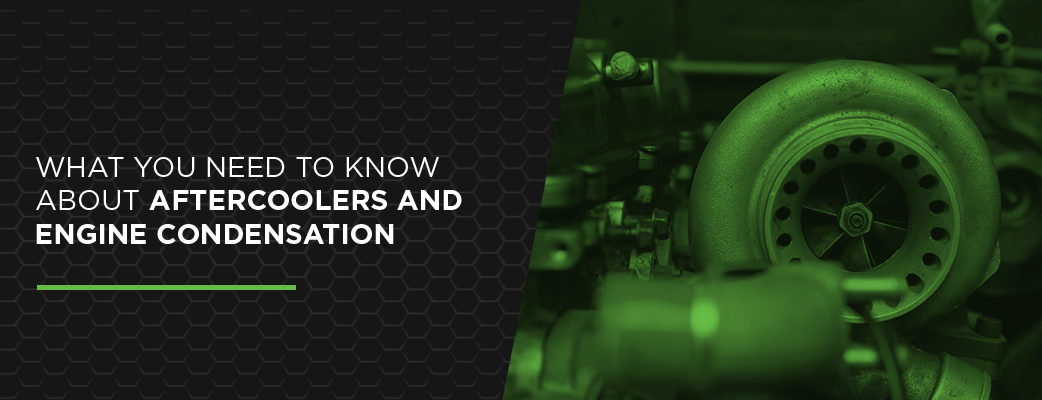
When you work with a marine engine every day, the most important task is doing everything you can to keep all its components up and running. One of these main components is the aftercooler. This device can manage air temperature on diesel engines for boats.
What many operators fail to realize about aftercoolers is that they can fill up with condensation under humid conditions. Believe it or not, this is fairly normal and more harmless than you may think.
What Is an Aftercooler on a Diesel Engine?
An aftercooler is a device positioned on a marine engine that controls the temperature of the air after it has traveled through the engine’s turbocharger. The turbocharger increases a boat’s power and energy efficiency by pushing pressurized air into the cylinders. During this process, the air can get very hot — often up to several hundred degrees Fahrenheit!
The aftercooler uses water tubes and transfers out some of the heat to cool this air before it reaches the combustion chamber. These high temperatures are so intense that they can be dangerous if not lowered before the air gets pushed out.
Aftercoolers can become dirty as hot air and water move through them, which means that regular cleanings are an important part of keeping them in shape. You can also support aftercooler performance and longevity by finding an effective lubricant to prevent corrosion and seizing.
How Condensation Fills Up the Aftercooler
Marine diesel engine aftercooler condensation is common, especially in warm weather. When hot, humid air blows through the aftercooler, it can cause water droplets to form and settle at the bottom of the device. While some operators might see this as an issue, it’s usually pretty minor. This is negligible as far as the engine is concerned, and in most cases, the water disappears on its own after evaporating during use.
The only situation in which condensation in the engine could cause an issue is if it sat for a long period. This can lead to corrosion or engine freezing during cold weather, which often results in costly repairs. The good news is that there are simple ways to prevent this from happening.
What Should I Do if There’s Condensation in My Aftercooler?
Engine condensation removal is painless in most situations, thanks to the help of aftercooler condensation drains. If you’re concerned about water building up in your aftercooler, we recommend implementing one that has a condensate drain. This ensures that water that may settle in the aftercooler can make its way out without causing your system trouble down the road.
While a condensate drain will also require some care and maintenance, it can help cut down on the risks of rust and other seasonal issues.
Reduce Condensation in Your Engine With Diesel Pro Power Aftercoolers
Aftercooler condensation is easy to manage with regular maintenance and draining capabilities. Browse through our inventory of marine aftercooler parts, Cummins engine parts, and Detroit Diesel engine parts today to find a solution that works for your engine.



 Free US Calls: 1-888-433-4735
Free US Calls: 1-888-433-4735 International: 305-545-5588
International: 305-545-5588